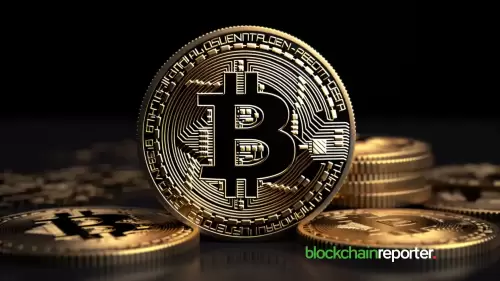 |
|
 |
|
 |
|
 |
|
 |
|
 |
|
 |
|
 |
|
 |
|
 |
|
 |
|
 |
|
 |
|
 |
|
 |
|
這就是新聞周四(5月22日)所暗示的,美國幾家最大的銀行正悄悄地計劃進入加密貨幣世界的集體飛躍。

Several of the United States' largest banks are planning to launch a jointly operated stablecoin, the Financial Times reported Thursday (May 22), citing people familiar with the matter.
《金融時報》(Fininancle Times)週四(5月22日)報導,美國最大的幾家銀行正計劃推出共同經營的Stablecoin,並以熟悉此事的人們為由。
The report said JPMorgan Chase, Bank of America, Wells Fargo and Citigroup are exploring the possibility of creating a digital dollar that could be used for peer-to-peer payments and B2B settlements. The initiative is still in the early stages, and there is no certainty that it will proceed.
報告說,美國銀行,富國銀行和花旗集團的摩根大通正在探索創建可用於點對點付款和B2B和解的數字美元的可能性。該倡議仍處於早期階段,並且無法確定它會繼續進行。
The banks are considering using existing rails like Early Warning Services, operator of Zelle, and The Clearing House to develop the stablecoin. They would also need to obtain approval from U.S. regulators.
銀行正在考慮使用現有的鐵路,例如預警服務,Zelle的運營商和交換所開發穩定的軌道。他們還需要獲得美國監管機構的批准。
The timing of this venture is no coincidence. For years, stablecoins, which are digital tokens pegged to traditional currencies like the U.S. dollar, have promised to blend the best of both worlds: the efficiency of blockchain transactions and the stability of fiat currency.
這項冒險的時機不是巧合。多年來,數字代幣與美元貨幣(如Dollar)掛鉤的Stablecoins已承諾將兩全其美地融合在一起:區塊鏈交易的效率和FIAT貨幣的穩定性。
They have grown rapidly, with Tether (USDT) and Circle's USD Coin (USDC) reaching hundreds of billions in circulation. Yet, their mainstream usage has remained limited due to regulatory uncertainty and a perception that they operate outside the traditional financial system.
它們已經迅速發展,束縛(USDT)和Circle的USD硬幣(USDC)達到了數千億美元的發行。然而,由於監管不確定性和對他們在傳統金融體系之外運作的看法,他們的主流用法仍然有限。
Enter the banks.
進入銀行。
Read More: The Payment Professional’s Guide to Stablecoins
閱讀更多:付款專業人士指南
A Pragmatic Vision for Blockchain Integration
區塊鏈整合的務實願景
The proposed consortium is reportedly considering using existing rails like Early Warning Services (operator of Zelle) and The Clearing House to develop a new kind of stablecoin infrastructure — one built by regulated entities from the ground up. Their idea? To issue a token that could eventually be used for everything from peer-to-peer payments to B2B settlements, all potentially under the watchful eye of federal regulators.
據報導,該擬議的財團正在考慮使用現有的鐵軌,例如預警服務(Zelle的運營商)和銷售房屋來開發一種新型的Stablecoin基礎設施,這是由監管實體從頭開始建造的。他們的想法?要發布一個令牌,該令牌最終可用於從點對點付款到B2B定居點的所有內容,所有這些都可能在聯邦監管機構的監視之下。
Because the U.S. stablecoin landscape has not yet found shelter under a clear regulatory framework, the banks are still in the exploratory phase, with a shared commitment to finding a model that’s compliant, scalable and secure. Their proposed stablecoin would be fully backed by fiat held at the banks and function similarly to other stablecoins, but with a key differentiator: trust in institutional governance.
由於美國穩定的景觀尚未在明確的監管框架下找到庇護所,因此銀行仍處於探索階段,並共同致力於尋找合規,可擴展和安全的模型。他們提議的Stablecoin將得到銀行持有的FIAT的全部支持,並且與其他Stablecoins相似,但具有關鍵的區別:對機構治理的信任。
This vision is a clear departure from the early crypto ethos of disrupting incumbents. Instead, it’s a bet that those same incumbents are best positioned to bring digital dollars into the mainstream.
這種願景與破壞任職者的早期加密精神明顯不同。取而代之的是,那些同一任職者最好將數字美元帶入主流。
"When you think about the needs of every FinTech or payments company, or a bank that wants to enter the [stablecoin] space, they need secure infrastructure, from the creation of assets, such as tokenizing them, to holding them, and of course moving them," Utila Co-Founder and CEO Bentzi Rabi told PYMNTS last month.
“當您考慮每個金融科技或付款公司的需求,或想要進入[Stablecoin]空間的銀行時,他們需要從創建資產的創建(例如Tokenize tokenigning toknigning toking othing tokents and ofting stable)的基礎架構,並在上個月將其移動,並當然將其移動。”
"Everyone will enter the stablecoin era in the end," Rabi added.
拉比補充說:“每個人都將最終進入Stablecoin時代。”
See also: Why Stablecoins Are Stuck at the Acceptance Hurdle
另請參閱:為什麼stabablecoins被卡在接受障礙
The Battle for the Digital Dollar
數字美元的戰鬥
Still, despite their promise, the majority of stablecoins are used for just one purpose: facilitating trading on crypto exchanges. They are a key foundational element of crypto markets, but not yet for payments and commerce.
儘管如此,儘管他們承諾,但大多數Stablecoins僅用於一個目的:促進加密交易所進行交易。它們是加密市場的關鍵基礎要素,但尚未用於付款和商業。
The involvement of major banks could change that.
主要銀行的參與可能會改變這一點。
At the same time, creating a stablecoin is one thing. Coordinating among multiple banks — each with its own technology stack, risk appetite and strategic priorities — is another. This kind of collaboration will require a shared governance model, common technical standards and airtight security protocols.
同時,創建一個穩定的是一回事。另一個銀行之間的協調 - 每家擁有自己的技術堆棧,風險食慾和戰略重點 - 是另一個銀行。這種合作將需要共享的治理模型,常見的技術標準和密封安全協議。
That’s why, for banks, the legislative momentum in the U.S. is a prerequisite. Institutions like JPMorgan and BofA are unlikely to risk their core operations on loosely regulated ventures. Instead, they see regulation as a moat, a way to differentiate themselves from crypto-native competitors and legitimize the space.
這就是為什麼,對於銀行來說,美國的立法勢頭是先決條件的原因。摩根大通和美國銀行等機構不太可能冒著核心行動的風險。取而代之的是,他們將法規視為護城河,這是一種與加密本地競爭對手區分開來並使空間合法化的方式。
In February, Bank of America CEO Brian Moynihan said in an interview that the bank would "go into" stablecoins if regulation were passed in the U.S., and regulatory compliance remains a key concern for financial stakeholders.
2月,美國銀行首席執行官布萊恩·莫尼漢(Brian Moynihan)在一次採訪中說,如果在美國通過了法規,該銀行將“進入” Stablecoins,而監管合規性仍然是金融利益相關者的關鍵問題。
But the banks' entry into the stablecoin market will not go uncontested. FinTechs like Circle and Paxos have spent years developing robust infrastructures and building partnerships with payment processors, exchanges and merchants. On Wednesday (May 21), it was announced that the Circle Payments Network (CPN) is now live, enabling stablecoin-powered cross-border payments.
但是銀行進入Stablecoin市場不會毫無爭議。像Circle和Paxos這樣的金融科技已經花費了多年的時間來開發強大的基礎設施,並與付款處理器,交易所和商家建立合作夥伴關係。在周三(5月21日),宣布Circle Payments Network(CPN)現已直播,使STableCoin驅動的跨境支付能力。
To succeed, the banks will need to articulate a clear value proposition — what does their stablecoin offer that existing ones don’t? One answer could lie in the integration with existing banking services. Imagine a Zelle payment settled instantly in a stablecoin, or a corporate treasury using tokenized dollars for real-time reconciliation. These are tangible use cases that banks are uniquely positioned to serve.
為了取得成功,銀行將需要闡明一個明確的價值主張 - 他們的穩定者提供了什麼現有人沒有的?一個答案可能在於與現有銀行服務集成。想像一下,Zelle付款立即在Stablecoin中立即解決,或者使用令牌資金進行實時和解的公司財政部。這些是銀行獨特地提供服務的切實用例。
An interesting take on the news comes from a recent blog post by banking trade publication The American Banker. In the post, the publication noted that the banks' involvement in the stablecoin space is a natural progression of their existing efforts in the digital asset domain.
這個新聞的一個有趣的看法來自銀行貿易出版物《美國銀行家》最近的博客文章。該出版物在帖子中指出,銀行參與Stablecoin空間是他們在數字資產領域中現有努力的自然發展。
For example, JPMorgan has already launched its own
例如,摩根大通已經推出了自己的
免責聲明:info@kdj.com
所提供的資訊並非交易建議。 kDJ.com對任何基於本文提供的資訊進行的投資不承擔任何責任。加密貨幣波動性較大,建議您充分研究後謹慎投資!
如果您認為本網站使用的內容侵犯了您的版權,請立即聯絡我們(info@kdj.com),我們將及時刪除。
-

- 比特幣流動性,滲透區和投資者的興趣:深入潛水
- 2025-08-03 14:00:00
- 在市場測試中,探索滲透區域中比特幣流動性的激增,並在市場測試中強烈的投資者信心。
-

- Web3,體育和計算能力:新的舞會
- 2025-08-03 13:59:21
- 探索Web3,計算能力和Boostara等創新平台如何徹底改變體育行業,為運動員和球迷創造新的機會。
-

-

- 加密鯨魚,模因硬幣和月光鏡頭:在2025年野外航行
- 2025-08-03 13:45:34
- 探索2025年加密鯨,模因硬幣和月球批發的融合。在這種動態景觀中發現趨勢,見解和潛在機會。
-

- 香港Stablecoin許可證:緊緊擠壓?
- 2025-08-03 13:24:03
- 香港對Stablecoin監管的方法是嚴格的,這表明數字資產創新與金融穩定之間的平衡謹慎。這對未來意味著什麼?
-

-

- XRP,FLR和突破潛力:嗡嗡聲是什麼?
- 2025-08-03 13:17:29
- 深入研究XRP的掙扎,FLR的潛力以及突破是否即將到來。獲取最新的見解和分析。
-

-






























































